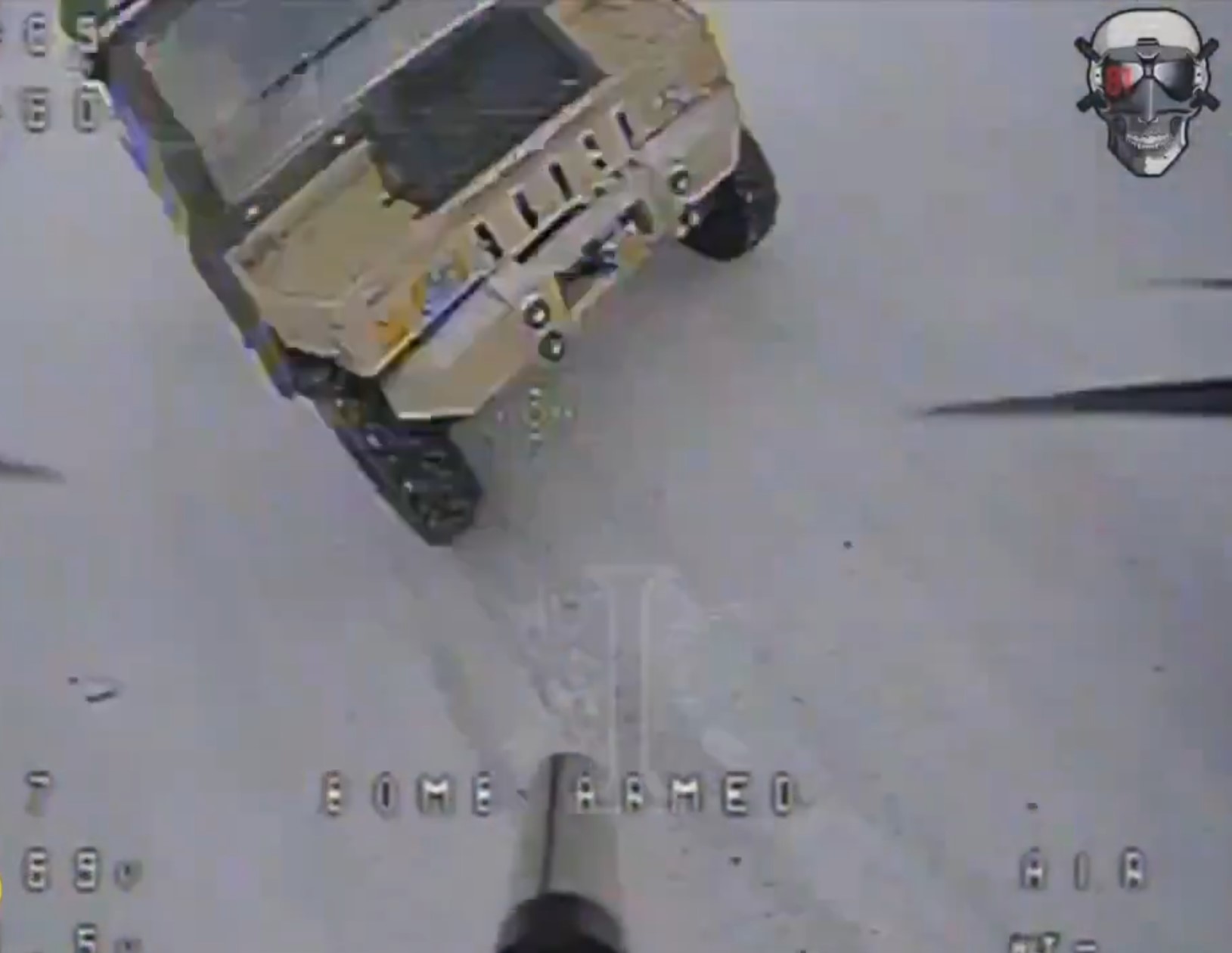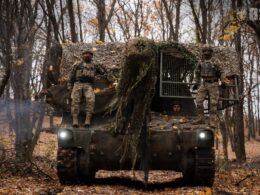Ukrainian forces have developed a sophisticated evolution in drone warfare that transforms basic FPV (First-Person-View) drones into "lurk-and-strike" lethal ambush weapons, according to Forbes technology journalist David Hambling.
"The technique is used behind Russian lines to strike vehicles travelling on supply routes and seems to be used as a way to interdict logistics – and also for targeted assassinations," Hambling states.
Recently released combat footage reveals the effectiveness of these new tactics across multiple scenarios.
The evidence in action
Three videos analyzed by Hambling showcase the versatility of these ambush operations.
In the first, operators target a Chinese-made Desertcross ATV, demonstrating a coordinated three-drone attack. The initial drone, concealed in snow, activates to pursue and strike the vehicle's windscreen. Two subsequent drones confirm the kill, documenting the target's transformation into "a burning wreck."
Special Operations Forces operators staged a ground "ambush" with an FPV drone on a Russian buggy in the Kursk region. pic.twitter.com/l4g8u4FdCA
— Mila.Alien 🇺🇦 (@mila__alien) January 11, 2025
A second video reveals attacks on Russian supply trucks, with drones hidden in long grass executing precise strikes on the vehicles' cab areas. The footage notably displays a two-stage arming process - an initial "ARMED" indicator followed by a "BOMB ARMED" notification during the pursuit.
Examples of FPV ambushes on Russian supply transport. Drone operators do not waste battery charge on the flight, and simply wait for targets on the ground on known supply roads. When the time comes, the operator takes off to eliminate the target. pic.twitter.com/vNsoKy2LG3
— Special Kherson Cat 🐈🇺🇦 (@bayraktar_1love) January 28, 2025
The third video documents a successful high-profile assassination. Ukraine's military intelligence (GUR) eliminated Sergey Melnikov, chief of staff of Russia's Storm Ossetia battalion, using the same ambush technique. The footage shows the drone executing a double-back maneuver to strike the windshield, forcing the vehicle off-road before delivering a final, fatal strike.
Chief of staff of Russian battalion Storm Ossetia eliminated in Zaporizhzhia region – Defense Intelligence of Ukraine
— Anton Gerashchenko (@Gerashchenko_en) January 5, 2025
Sergey “Kama” Melnikov was killed in an operation of the Ukrainian Intelligence unit Kraken on Dec 29, 2024.
An FPV ambush was carefully planned based on… pic.twitter.com/EcBQNbK9wi
The anatomy of an ambush
The technique's effectiveness relies on three precise phases:
- Silent positioning of powered-down drones in concealed locations along enemy routes
- Two-stage activation when targets appear
- Execution of either a forward-and-back or rear-approach strike pattern
Ukrainian forces typically deploy these drones in coordinated teams: a primary strike drone, a confirmation drone, and a follow-up strike drone if needed. This redundancy significantly increases mission success rates.
This approach cleverly circumvents the FPV drones' 20-minute flight time limitation. Larger carrier drones, such as the Wild Hornets Queen Hornet, may deploy these ambush drones and serve as relay stations for extended control range.
At approximately $500 per drone, the strategy proves remarkably cost-effective. However, availability, rather than cost, typically determines deployment decisions.
Future implications
The technique points toward more advanced developments like the American HellHive system, where multiple drones could be pre-positioned in concealed boxes for extended periods. When combined with long-range carrier drones like Ukraine's Lyutyi, which can travel over 1,000 miles, these tactics could reshape battlefield logistics and security operations.
This evolution beyond traditional mine warfare offers greater flexibility and persistence than conventional explosives while proving significantly harder to counter due to the drones' mobility and remote operation capability.
Read more:
- Russia’s fiber-optic drones dodge jamming, but Ukraine hunts them with infrared and sound
- Drones attack Russia's largest oil and gas facilities in Volgograd, Astrakhan to disrupt their military use
- Russia caught presenting own Kursk losses as Ukrainian defeats, OSINT analysis shows
Special Operations Forces operators staged a ground "ambush" with an FPV drone on a Russian buggy in the Kursk region. pic.twitter.com/l4g8u4FdCA
— Mila.Alien 🇺🇦 (@mila__alien) January 11, 2025
Examples of FPV ambushes on Russian supply transport. Drone operators do not waste battery charge on the flight, and simply wait for targets on the ground on known supply roads. When the time comes, the operator takes off to eliminate the target. pic.twitter.com/vNsoKy2LG3
— Special Kherson Cat 🐈🇺🇦 (@bayraktar_1love) January 28, 2025
Chief of staff of Russian battalion Storm Ossetia eliminated in Zaporizhzhia region – Defense Intelligence of Ukraine
— Anton Gerashchenko (@Gerashchenko_en) January 5, 2025
Sergey “Kama” Melnikov was killed in an operation of the Ukrainian Intelligence unit Kraken on Dec 29, 2024.
An FPV ambush was carefully planned based on… pic.twitter.com/EcBQNbK9wi





